FINC20019 Presentation: Money and Capital Market Analysis Report
VerifiedAdded on 2022/09/09
|12
|803
|20
Presentation
AI Summary
This report examines the money and capital markets, highlighting their crucial role in a country's financial success by ensuring fund availability and facilitating investor returns. It differentiates between capital and money markets, focusing on the secondary market as a platform for trading securities among investors without company intervention. The report details the four types of secondary markets: direct search, broker, dealer, and auction. Furthermore, it explores the use of futures contracts, derivative financial instruments that obligate parties to transact assets at a predetermined future date and price, and their utility for hedging and speculation within the financial market. The conclusion emphasizes the secondary market's role in providing real-time securities valuation and liquidity, and the importance of futures for managing price risks and altering portfolio risks.
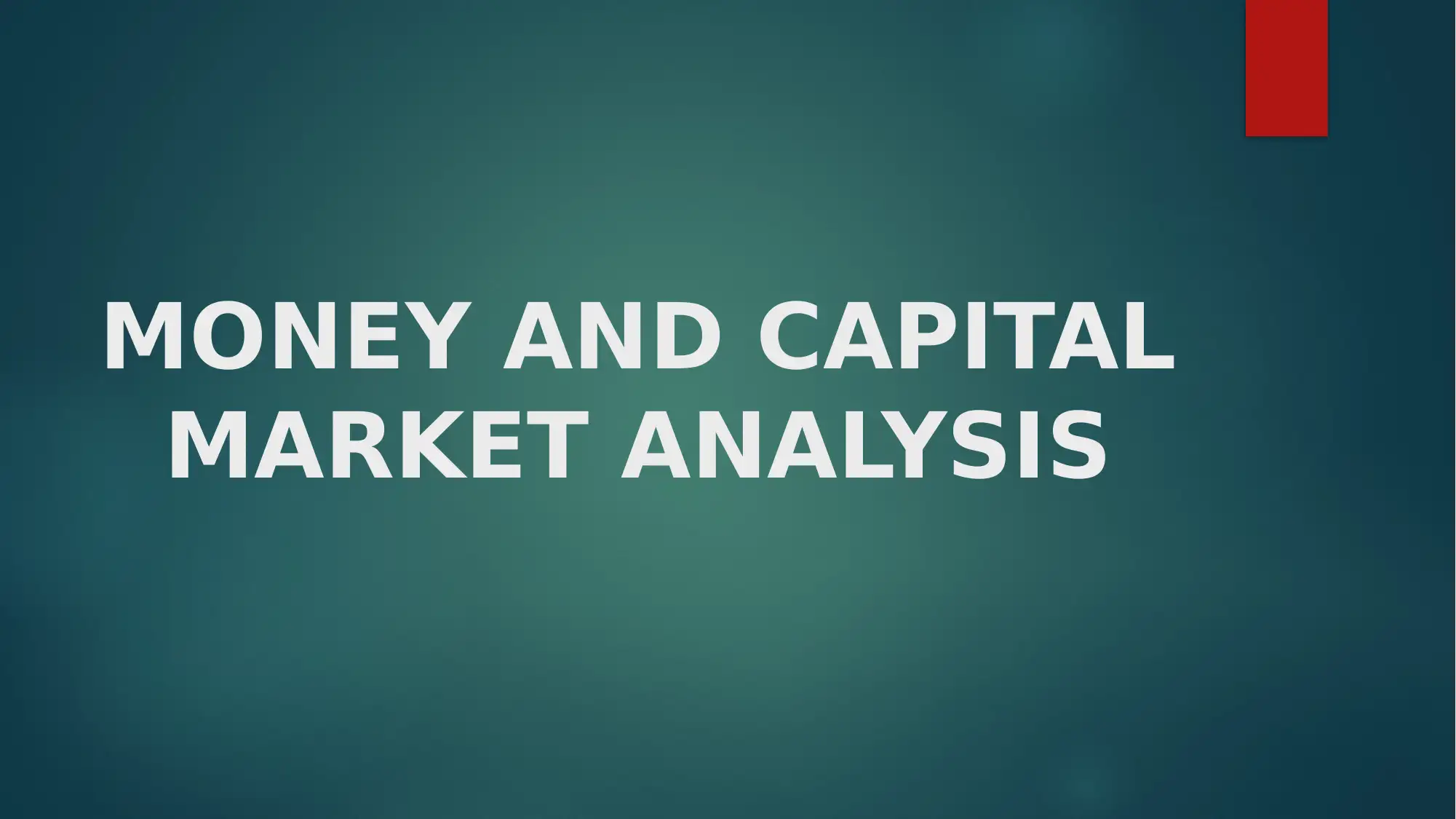
MONEY AND CAPITAL
MARKET ANALYSIS
MARKET ANALYSIS
Paraphrase This Document
Need a fresh take? Get an instant paraphrase of this document with our AI Paraphraser
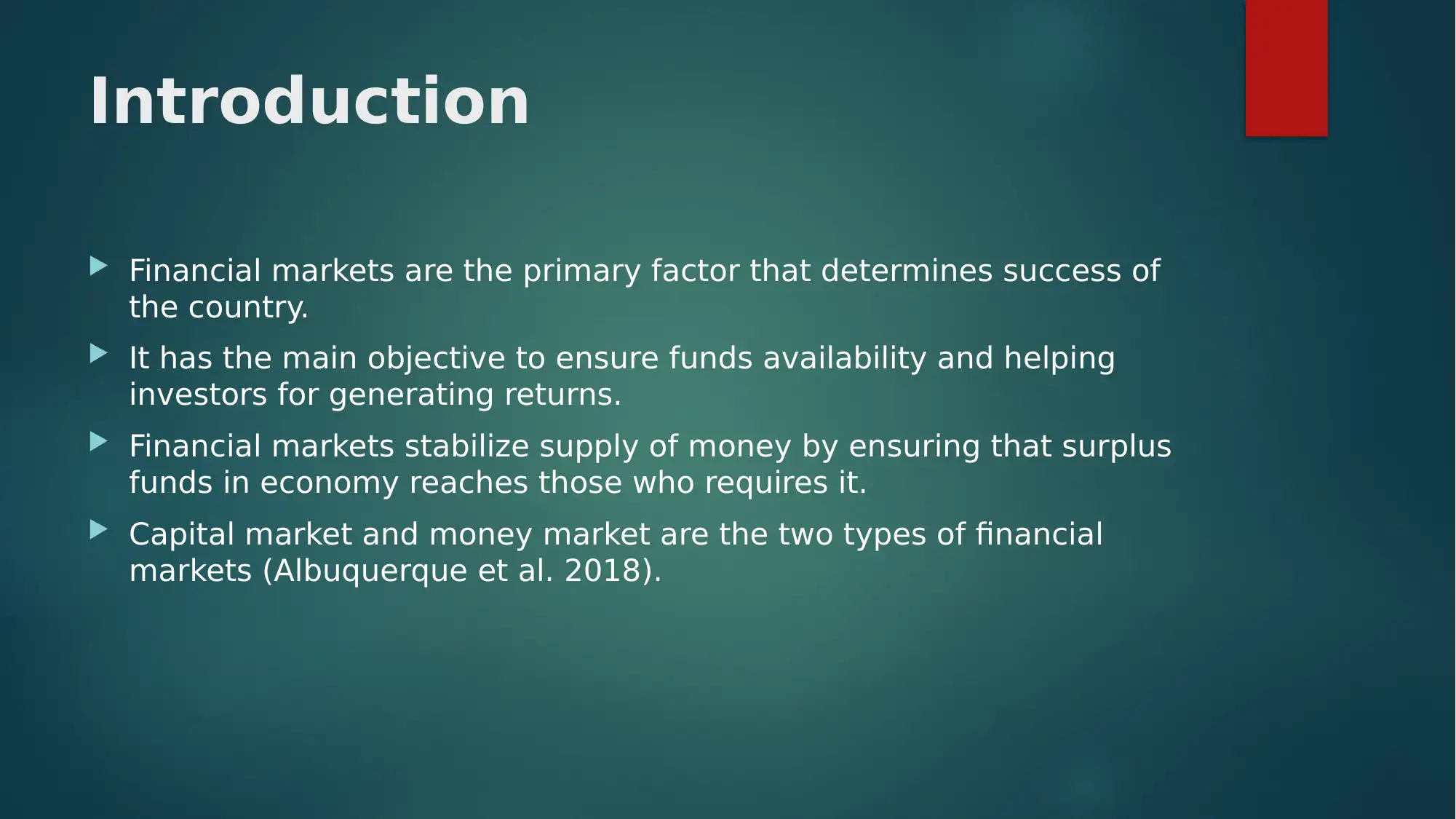
Introduction
Financial markets are the primary factor that determines success of
the country.
It has the main objective to ensure funds availability and helping
investors for generating returns.
Financial markets stabilize supply of money by ensuring that surplus
funds in economy reaches those who requires it.
Capital market and money market are the two types of financial
markets (Albuquerque et al. 2018).
Financial markets are the primary factor that determines success of
the country.
It has the main objective to ensure funds availability and helping
investors for generating returns.
Financial markets stabilize supply of money by ensuring that surplus
funds in economy reaches those who requires it.
Capital market and money market are the two types of financial
markets (Albuquerque et al. 2018).
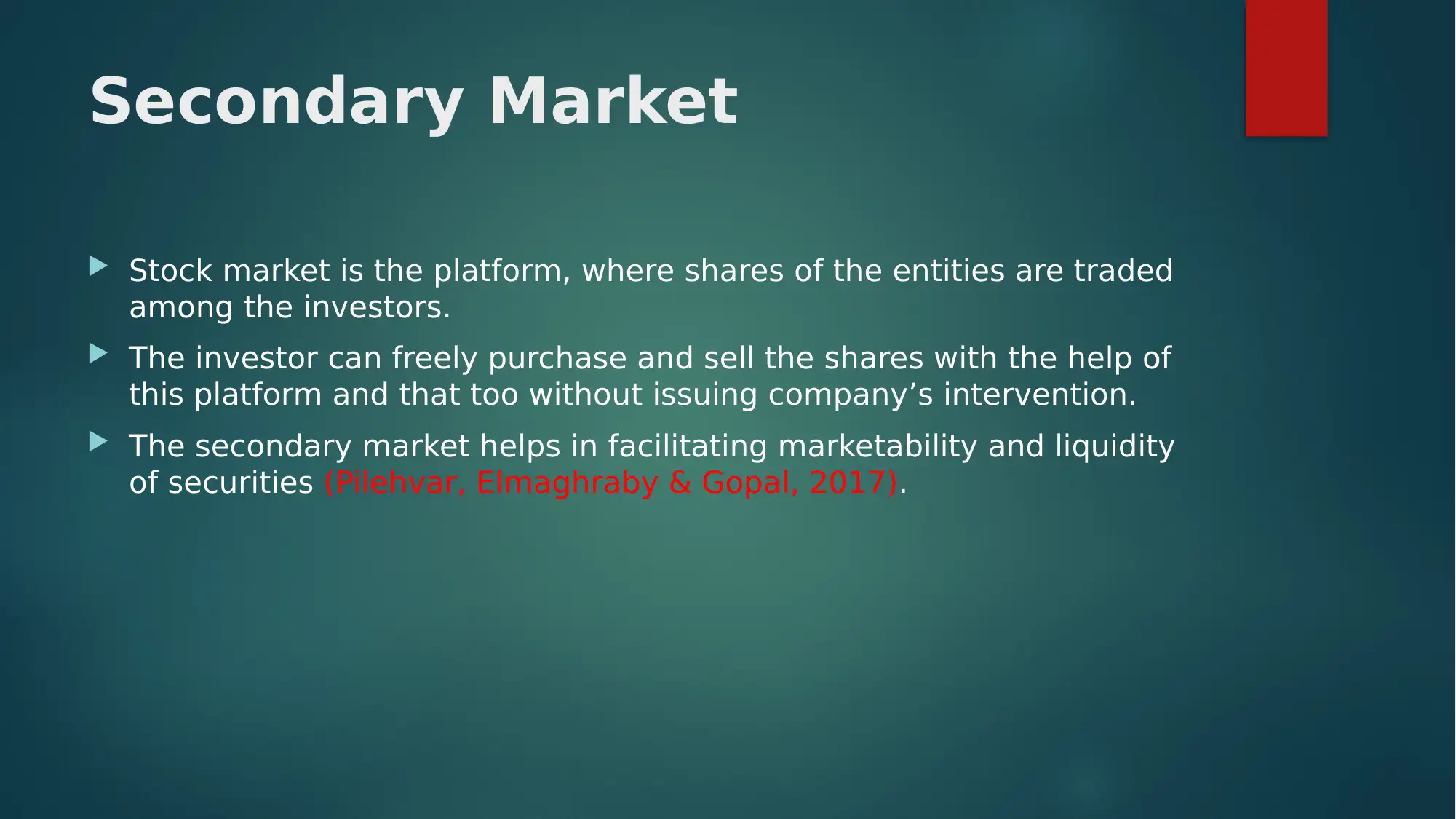
Secondary Market
Stock market is the platform, where shares of the entities are traded
among the investors.
The investor can freely purchase and sell the shares with the help of
this platform and that too without issuing company’s intervention.
The secondary market helps in facilitating marketability and liquidity
of securities (Pilehvar, Elmaghraby & Gopal, 2017).
Stock market is the platform, where shares of the entities are traded
among the investors.
The investor can freely purchase and sell the shares with the help of
this platform and that too without issuing company’s intervention.
The secondary market helps in facilitating marketability and liquidity
of securities (Pilehvar, Elmaghraby & Gopal, 2017).
⊘ This is a preview!⊘
Do you want full access?
Subscribe today to unlock all pages.

Trusted by 1+ million students worldwide
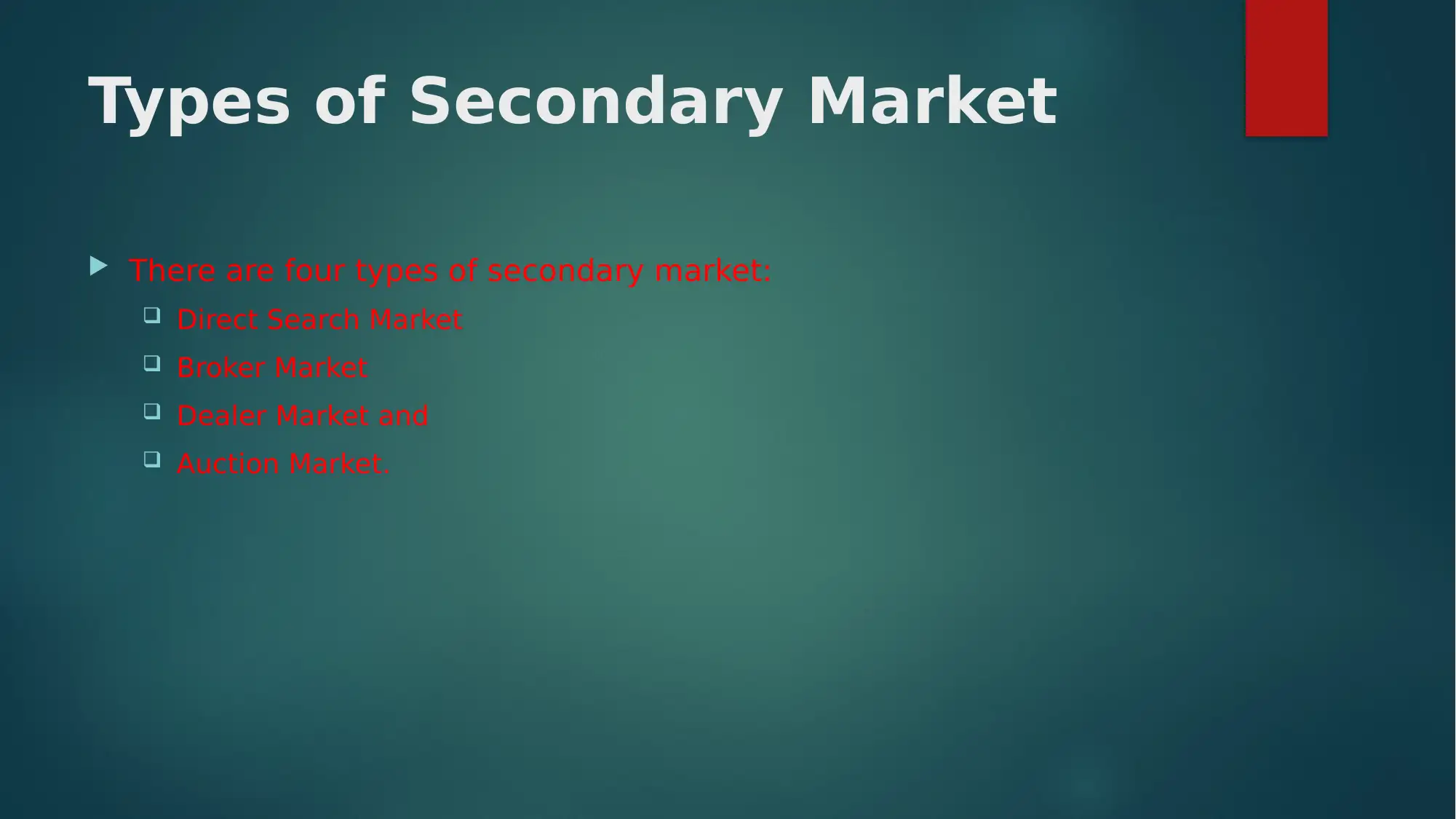
Types of Secondary Market
There are four types of secondary market:
Direct Search Market
Broker Market
Dealer Market and
Auction Market.
There are four types of secondary market:
Direct Search Market
Broker Market
Dealer Market and
Auction Market.
Paraphrase This Document
Need a fresh take? Get an instant paraphrase of this document with our AI Paraphraser
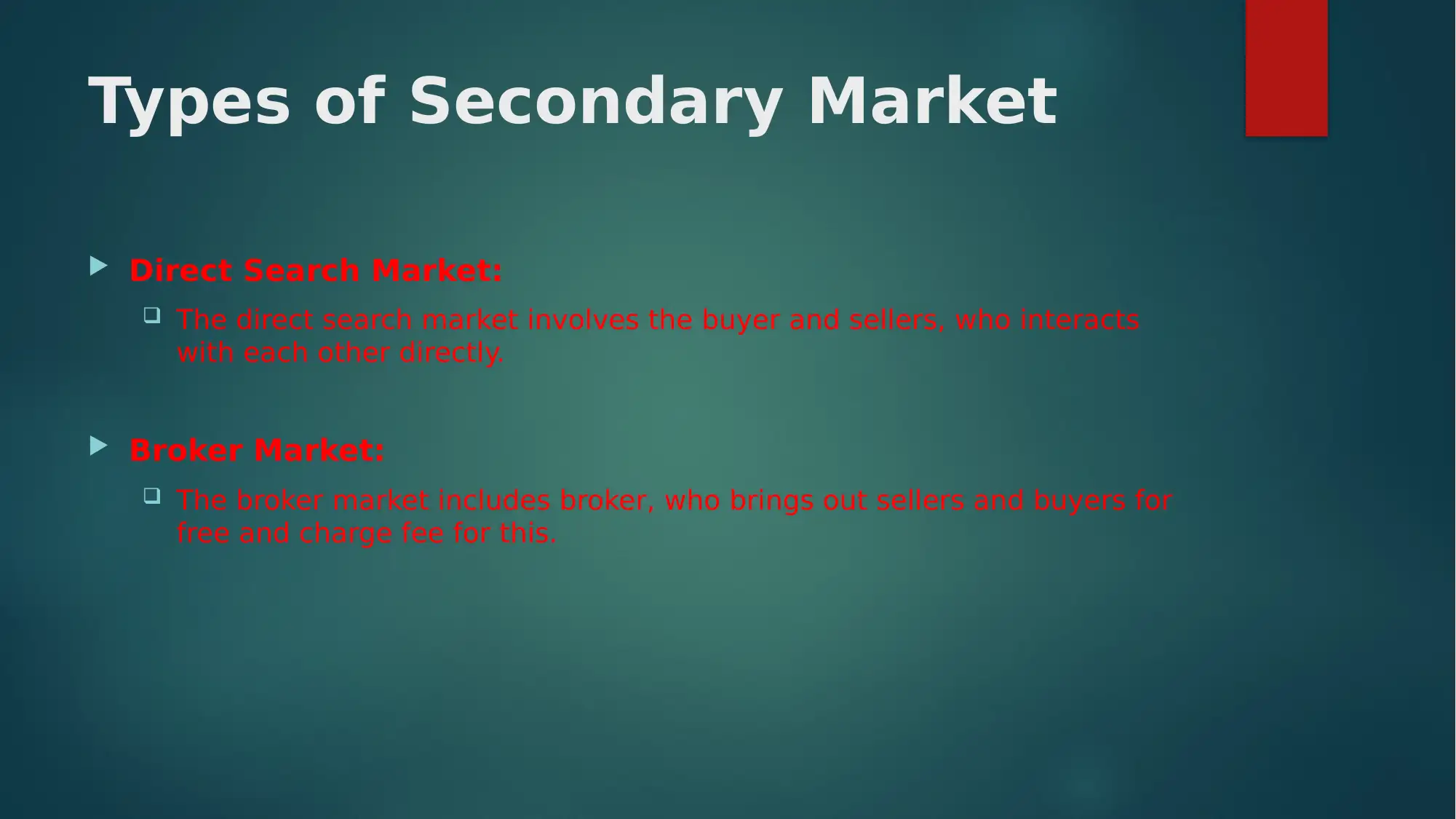
Types of Secondary Market
Direct Search Market:
The direct search market involves the buyer and sellers, who interacts
with each other directly.
Broker Market:
The broker market includes broker, who brings out sellers and buyers for
free and charge fee for this.
Direct Search Market:
The direct search market involves the buyer and sellers, who interacts
with each other directly.
Broker Market:
The broker market includes broker, who brings out sellers and buyers for
free and charge fee for this.
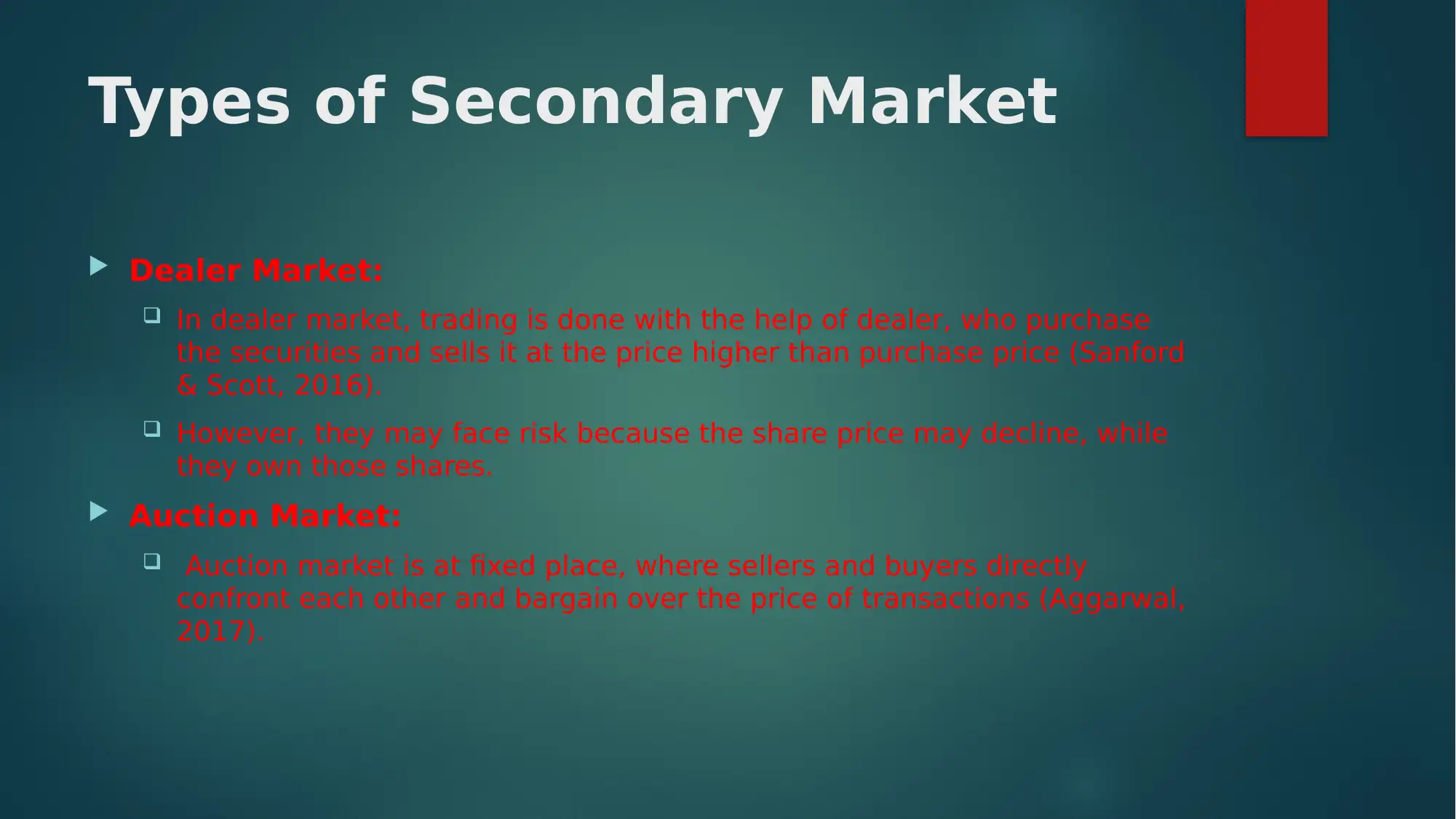
Types of Secondary Market
Dealer Market:
In dealer market, trading is done with the help of dealer, who purchase
the securities and sells it at the price higher than purchase price (Sanford
& Scott, 2016).
However, they may face risk because the share price may decline, while
they own those shares.
Auction Market:
Auction market is at fixed place, where sellers and buyers directly
confront each other and bargain over the price of transactions (Aggarwal,
2017).
Dealer Market:
In dealer market, trading is done with the help of dealer, who purchase
the securities and sells it at the price higher than purchase price (Sanford
& Scott, 2016).
However, they may face risk because the share price may decline, while
they own those shares.
Auction Market:
Auction market is at fixed place, where sellers and buyers directly
confront each other and bargain over the price of transactions (Aggarwal,
2017).
⊘ This is a preview!⊘
Do you want full access?
Subscribe today to unlock all pages.

Trusted by 1+ million students worldwide
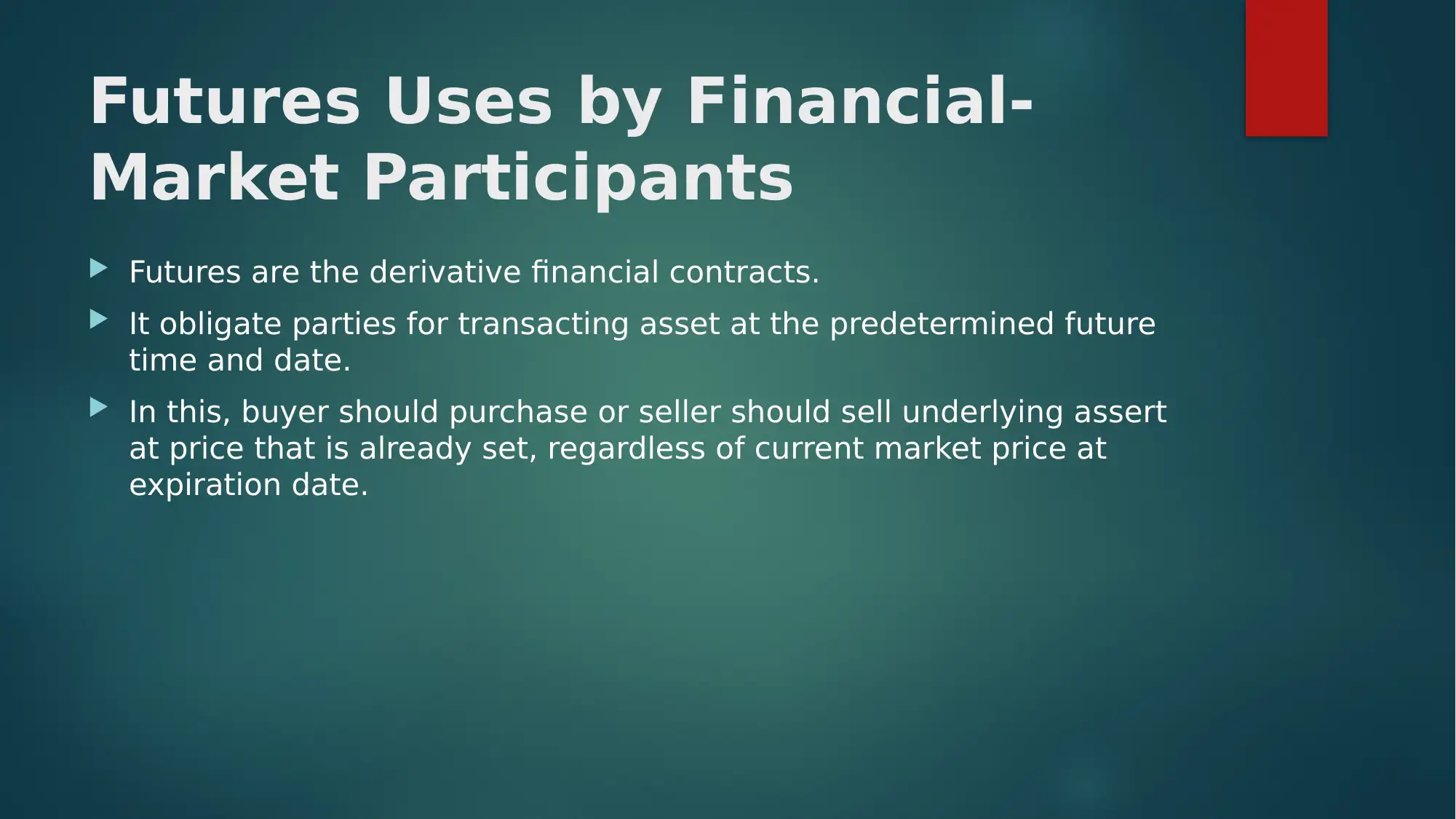
Futures Uses by Financial-
Market Participants
Futures are the derivative financial contracts.
It obligate parties for transacting asset at the predetermined future
time and date.
In this, buyer should purchase or seller should sell underlying assert
at price that is already set, regardless of current market price at
expiration date.
Market Participants
Futures are the derivative financial contracts.
It obligate parties for transacting asset at the predetermined future
time and date.
In this, buyer should purchase or seller should sell underlying assert
at price that is already set, regardless of current market price at
expiration date.
Paraphrase This Document
Need a fresh take? Get an instant paraphrase of this document with our AI Paraphraser
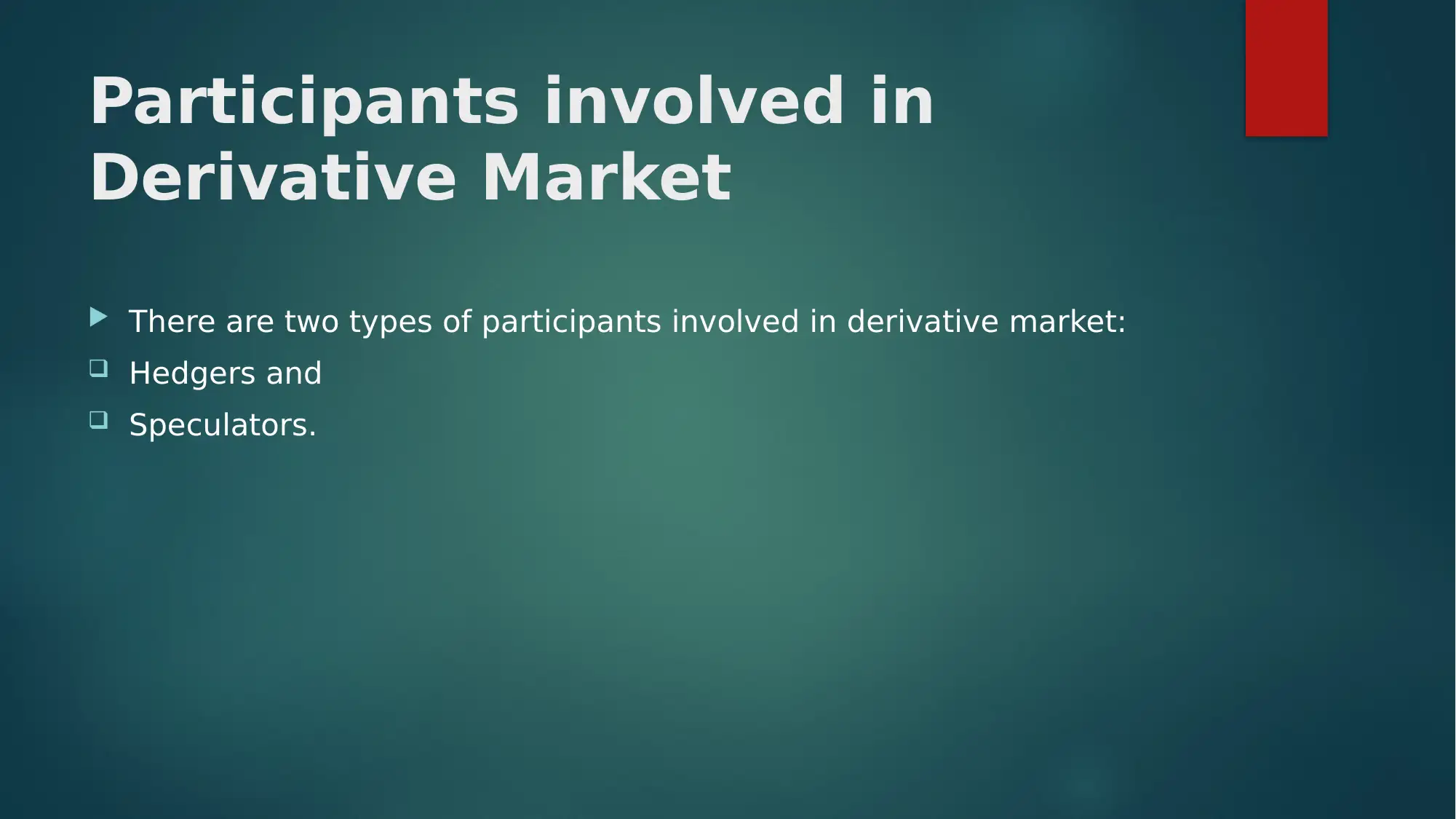
Participants involved in
Derivative Market
There are two types of participants involved in derivative market:
Hedgers and
Speculators.
Derivative Market
There are two types of participants involved in derivative market:
Hedgers and
Speculators.
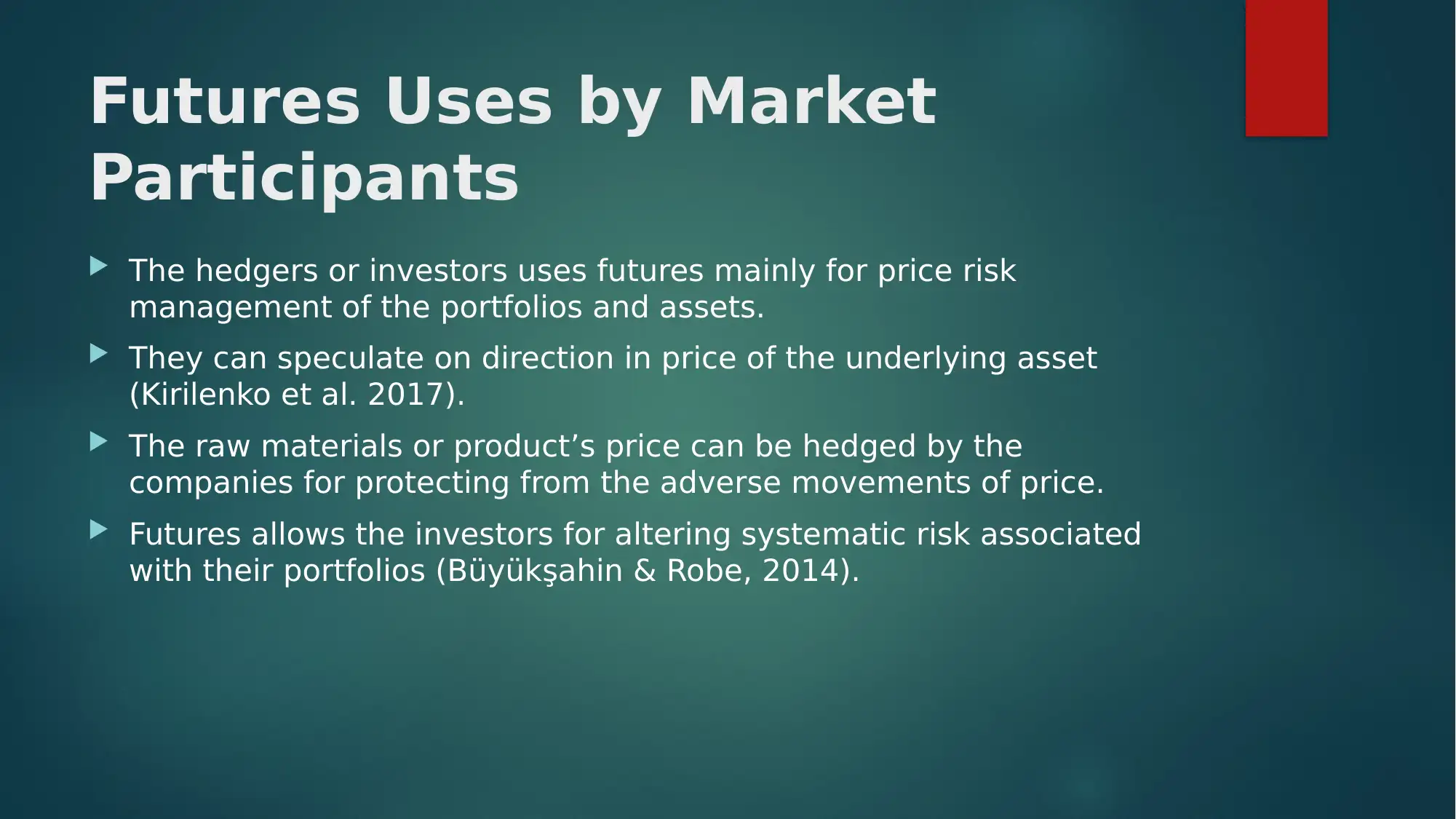
Futures Uses by Market
Participants
The hedgers or investors uses futures mainly for price risk
management of the portfolios and assets.
They can speculate on direction in price of the underlying asset
(Kirilenko et al. 2017).
The raw materials or product’s price can be hedged by the
companies for protecting from the adverse movements of price.
Futures allows the investors for altering systematic risk associated
with their portfolios (Büyükşahin & Robe, 2014).
Participants
The hedgers or investors uses futures mainly for price risk
management of the portfolios and assets.
They can speculate on direction in price of the underlying asset
(Kirilenko et al. 2017).
The raw materials or product’s price can be hedged by the
companies for protecting from the adverse movements of price.
Futures allows the investors for altering systematic risk associated
with their portfolios (Büyükşahin & Robe, 2014).
⊘ This is a preview!⊘
Do you want full access?
Subscribe today to unlock all pages.

Trusted by 1+ million students worldwide
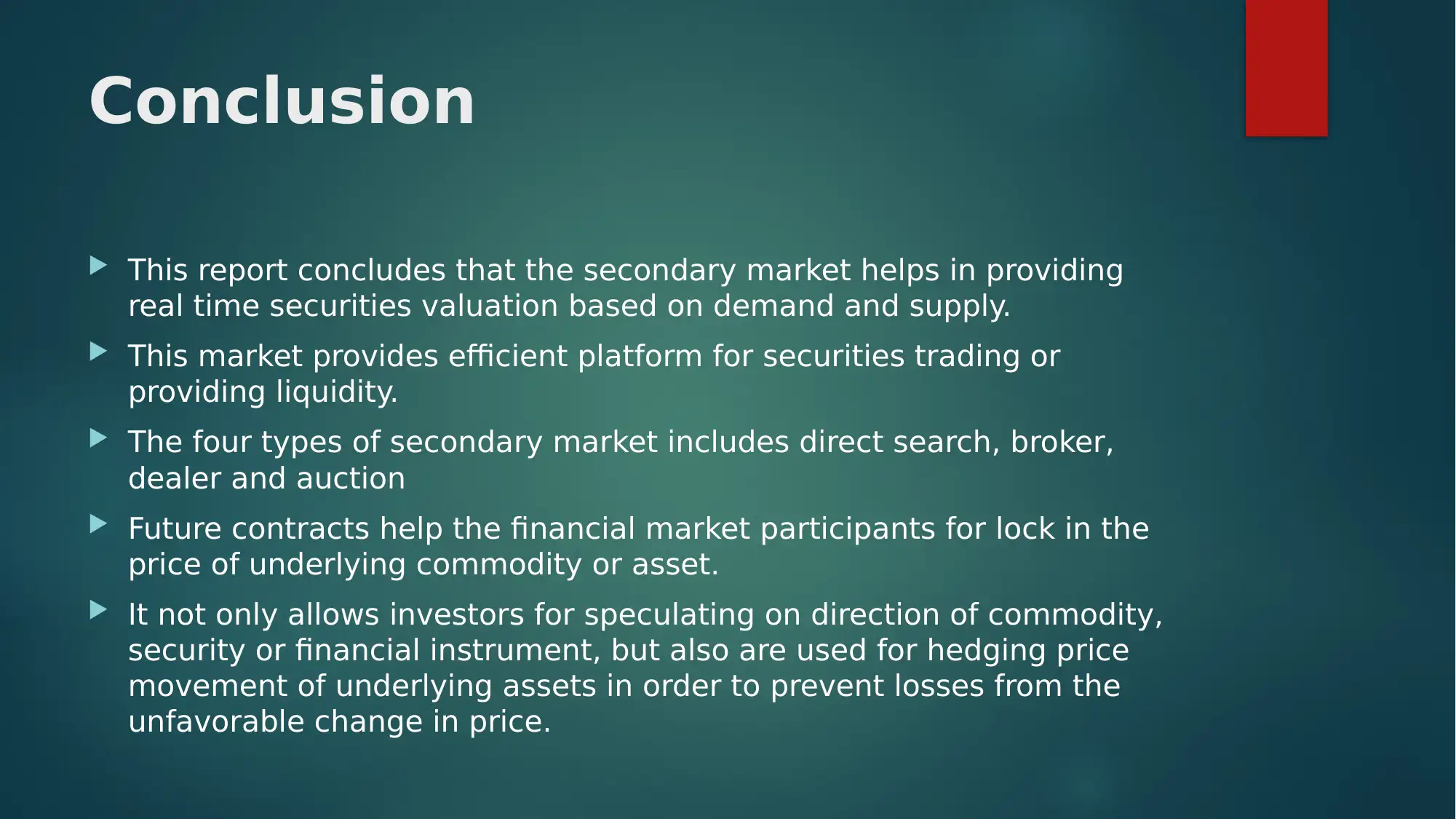
Conclusion
This report concludes that the secondary market helps in providing
real time securities valuation based on demand and supply.
This market provides efficient platform for securities trading or
providing liquidity.
The four types of secondary market includes direct search, broker,
dealer and auction
Future contracts help the financial market participants for lock in the
price of underlying commodity or asset.
It not only allows investors for speculating on direction of commodity,
security or financial instrument, but also are used for hedging price
movement of underlying assets in order to prevent losses from the
unfavorable change in price.
This report concludes that the secondary market helps in providing
real time securities valuation based on demand and supply.
This market provides efficient platform for securities trading or
providing liquidity.
The four types of secondary market includes direct search, broker,
dealer and auction
Future contracts help the financial market participants for lock in the
price of underlying commodity or asset.
It not only allows investors for speculating on direction of commodity,
security or financial instrument, but also are used for hedging price
movement of underlying assets in order to prevent losses from the
unfavorable change in price.
Paraphrase This Document
Need a fresh take? Get an instant paraphrase of this document with our AI Paraphraser
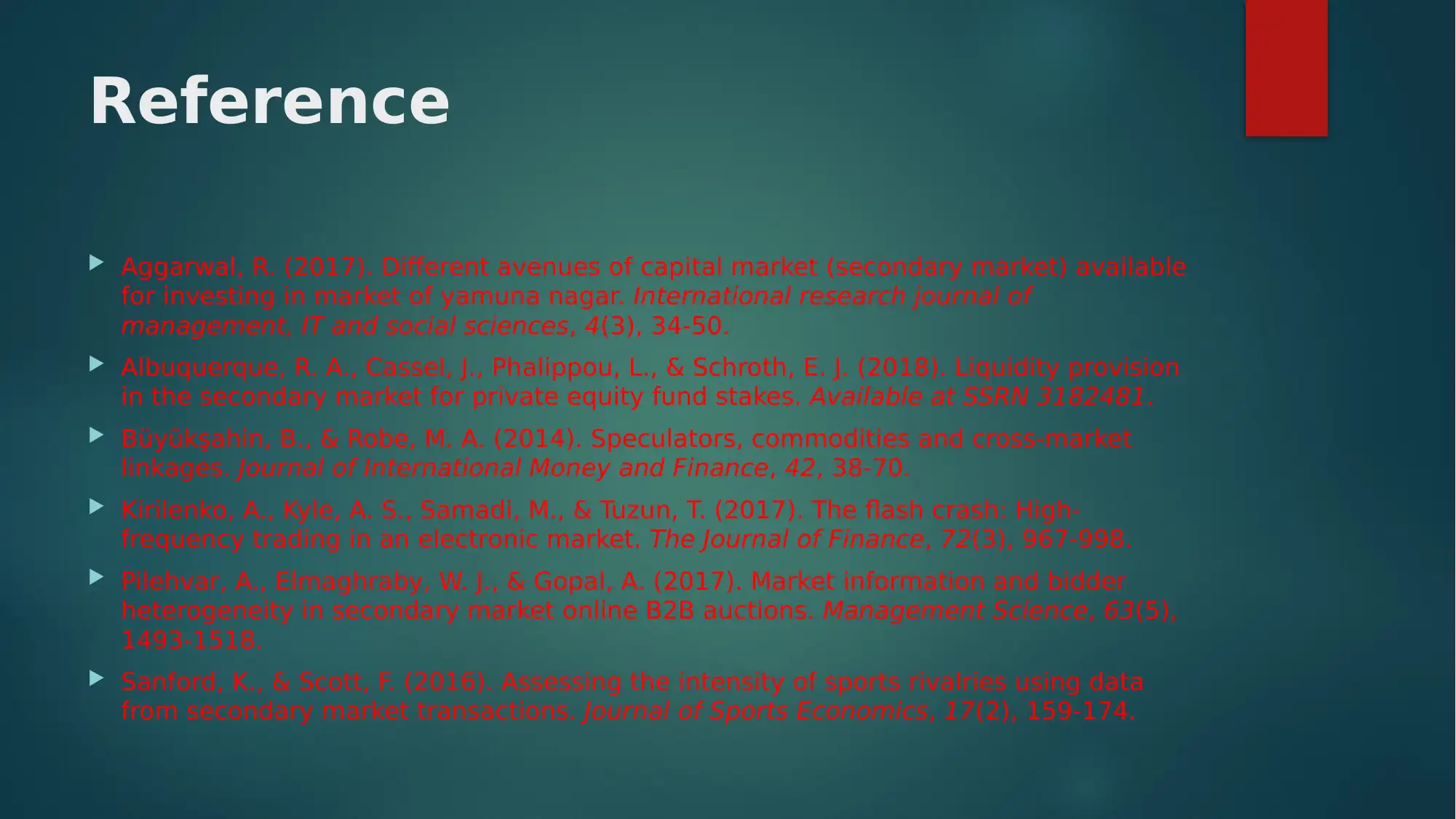
Reference
Aggarwal, R. (2017). Different avenues of capital market (secondary market) available
for investing in market of yamuna nagar. International research journal of
management, IT and social sciences, 4(3), 34-50.
Albuquerque, R. A., Cassel, J., Phalippou, L., & Schroth, E. J. (2018). Liquidity provision
in the secondary market for private equity fund stakes. Available at SSRN 3182481.
Büyükşahin, B., & Robe, M. A. (2014). Speculators, commodities and cross-market
linkages. Journal of International Money and Finance, 42, 38-70.
Kirilenko, A., Kyle, A. S., Samadi, M., & Tuzun, T. (2017). The flash crash: High‐
frequency trading in an electronic market. The Journal of Finance, 72(3), 967-998.
Pilehvar, A., Elmaghraby, W. J., & Gopal, A. (2017). Market information and bidder
heterogeneity in secondary market online B2B auctions. Management Science, 63(5),
1493-1518.
Sanford, K., & Scott, F. (2016). Assessing the intensity of sports rivalries using data
from secondary market transactions. Journal of Sports Economics, 17(2), 159-174.
Aggarwal, R. (2017). Different avenues of capital market (secondary market) available
for investing in market of yamuna nagar. International research journal of
management, IT and social sciences, 4(3), 34-50.
Albuquerque, R. A., Cassel, J., Phalippou, L., & Schroth, E. J. (2018). Liquidity provision
in the secondary market for private equity fund stakes. Available at SSRN 3182481.
Büyükşahin, B., & Robe, M. A. (2014). Speculators, commodities and cross-market
linkages. Journal of International Money and Finance, 42, 38-70.
Kirilenko, A., Kyle, A. S., Samadi, M., & Tuzun, T. (2017). The flash crash: High‐
frequency trading in an electronic market. The Journal of Finance, 72(3), 967-998.
Pilehvar, A., Elmaghraby, W. J., & Gopal, A. (2017). Market information and bidder
heterogeneity in secondary market online B2B auctions. Management Science, 63(5),
1493-1518.
Sanford, K., & Scott, F. (2016). Assessing the intensity of sports rivalries using data
from secondary market transactions. Journal of Sports Economics, 17(2), 159-174.

⊘ This is a preview!⊘
Do you want full access?
Subscribe today to unlock all pages.

Trusted by 1+ million students worldwide
1 out of 12
Related Documents
Your All-in-One AI-Powered Toolkit for Academic Success.
+13062052269
info@desklib.com
Available 24*7 on WhatsApp / Email
![[object Object]](/_next/static/media/star-bottom.7253800d.svg)
Unlock your academic potential
Copyright © 2020–2025 A2Z Services. All Rights Reserved. Developed and managed by ZUCOL.





